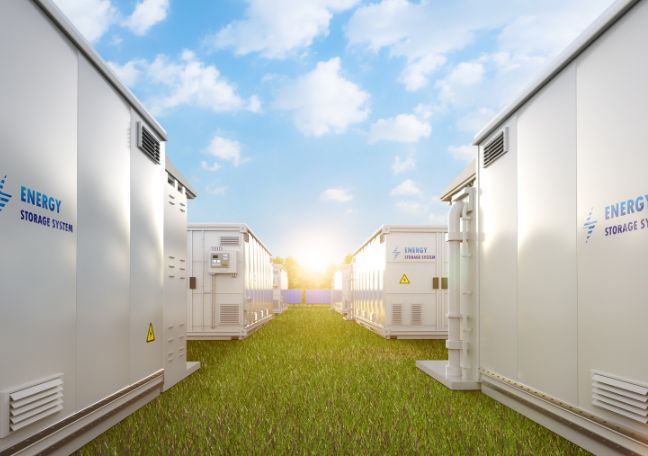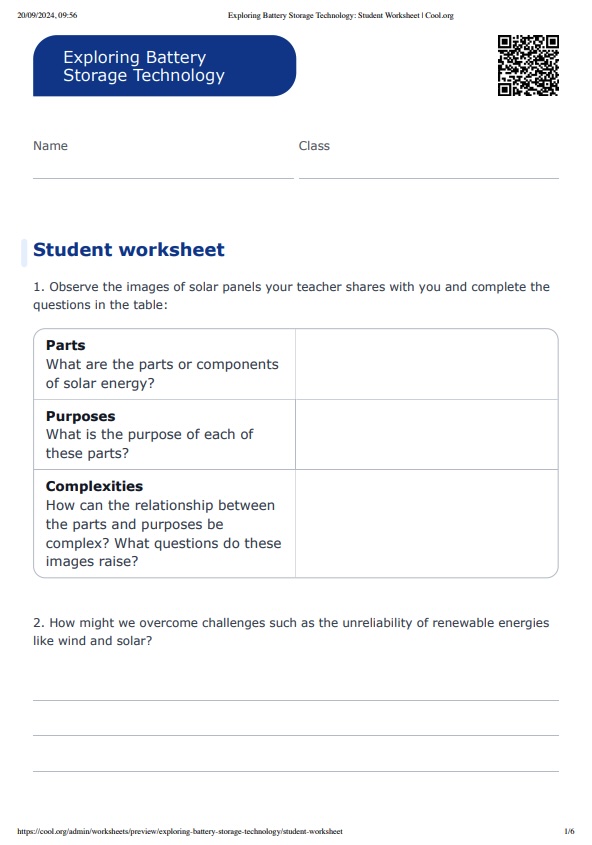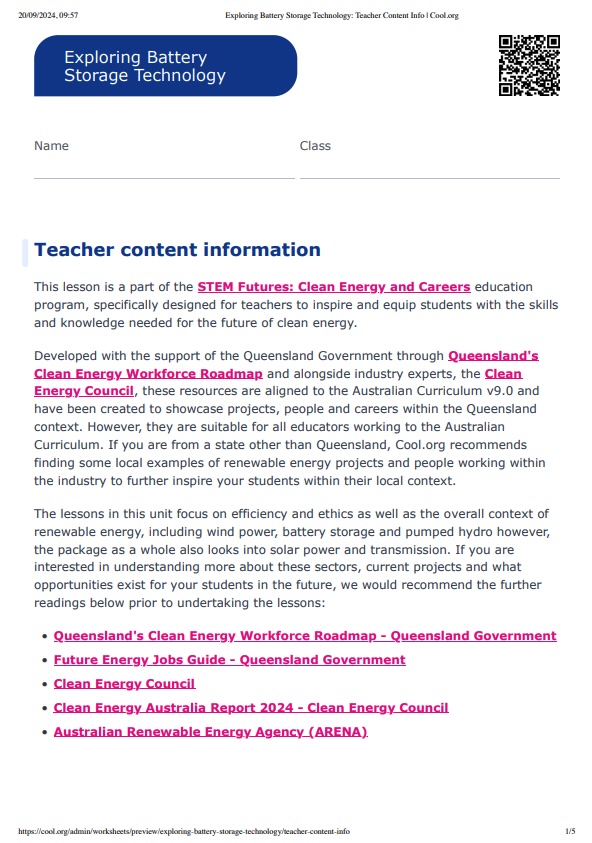Lesson summary
Students will analyse the key factors that contribute to scientific knowledge and practices being adopted more broadly by society by investigating the adoption of battery storage technology. Through a series of activities, students will define battery storage, explore its significance, identify societal factors influencing its uptake, and evaluate its advantages and disadvantages. They will apply their knowledge by developing and presenting project proposals to promote battery storage in their school or local community.
Learning intentions:
Students will...
- understand the factors that contribute to the adoption of scientific knowledge and practices in society, with a focus on battery storage technology.
Success criteria:
Students can...
- define battery storage and explain its significance in both current and future societal contexts
- identify and analyse the societal factors that have contributed to the increased uptake of battery storage projects
- evaluate the advantages and disadvantages of battery storage technology, providing examples of its impact on individuals, industries, and communities.
Lesson guides and printables
Curriculum links
Select your curriculum from the options below.
Lesson details
Skills
This lesson is designed to build students’ competencies in the following skills:
- creative thinking
- critical thinking
- collaboration
- communication
- community engagement
- curiosity
- digital literacy
- initiative
- problem-solving
Curriculum Mapping
Australian Curriculum (v9.0) content description: Year 9, Science
Students learn to:
- analyse the key factors that contribute to science knowledge and practices being adopted more broadly by society (AC9S9H03)
- write and create texts to communicate ideas, findings and arguments effectively for identified purposes and audiences, including selection of appropriate content, language and text features, using digital tools as appropriate(AC9S9I08).
Relevant parts of Year 9 achievement standards: Students can analyse the different ways in which science and society are interconnected. They select and use content, language and text features effectively to achieve their purpose when communicating their ideas, findings and arguments to specific audiences.
NSW Syllabus outcomes:
- evaluates current and alternative energy use based on ethical and sustainability considerations (SC5-EGY-01)
- communicates scientific arguments with evidence, using scientific language and terminology in a range of communication forms (SC5-WS-08)
General capabilities: Critical and Creative Thinking, Digital Literacy, Ethical Understanding, Personal and Social Capability
Cross-curriculum priority: Sustainability
Level of teacher scaffolding: Medium: facilitate class discussion, research and group work.
UN Sustainable Development Goals
UN SDG 7: Ensure access to affordable, reliable, sustainable and modern energy for all.
- Target 7:1 By 2030, ensure universal access to affordable, reliable and modern energy services.
Resources Required
- Device capable of displaying audiovisual material
- A3 paper
- Post-it notes
- Student devices for individual research
Additional Info
This lesson has been developed in partnership with the Queensland Government through Queensland's Clean Energy Workforce Roadmap. Cool.org would like to acknowledge and express our gratitude to the Clean Energy Council for the expertise and advice provided in creating these resources.
Related Professional Learning
STEM Professional Learning Pathway
Quick summary: Enhance your practice with Cool.org's STEM Professional Learning Pathway. This year-long plan is designed to build your skills and capabilities in teaching STEM, ultimately transforming you into a STEM Innovator. The pathway will prepare you to integrate STEM education effectively, adapt to technological advancements and inspire students to succeed in a rapidly evolving world.





Welcome back!
Don't have an account yet?
Log in with:
Create your free Cool.org account.
Many of our resources are free, with an option to upgrade to Cool+ for premium content.
Already have an account?
Sign up with:
By signing up you accept Cool.org's Terms and Conditions(Opens in new tab) and Privacy Policy(Opens in new tab).